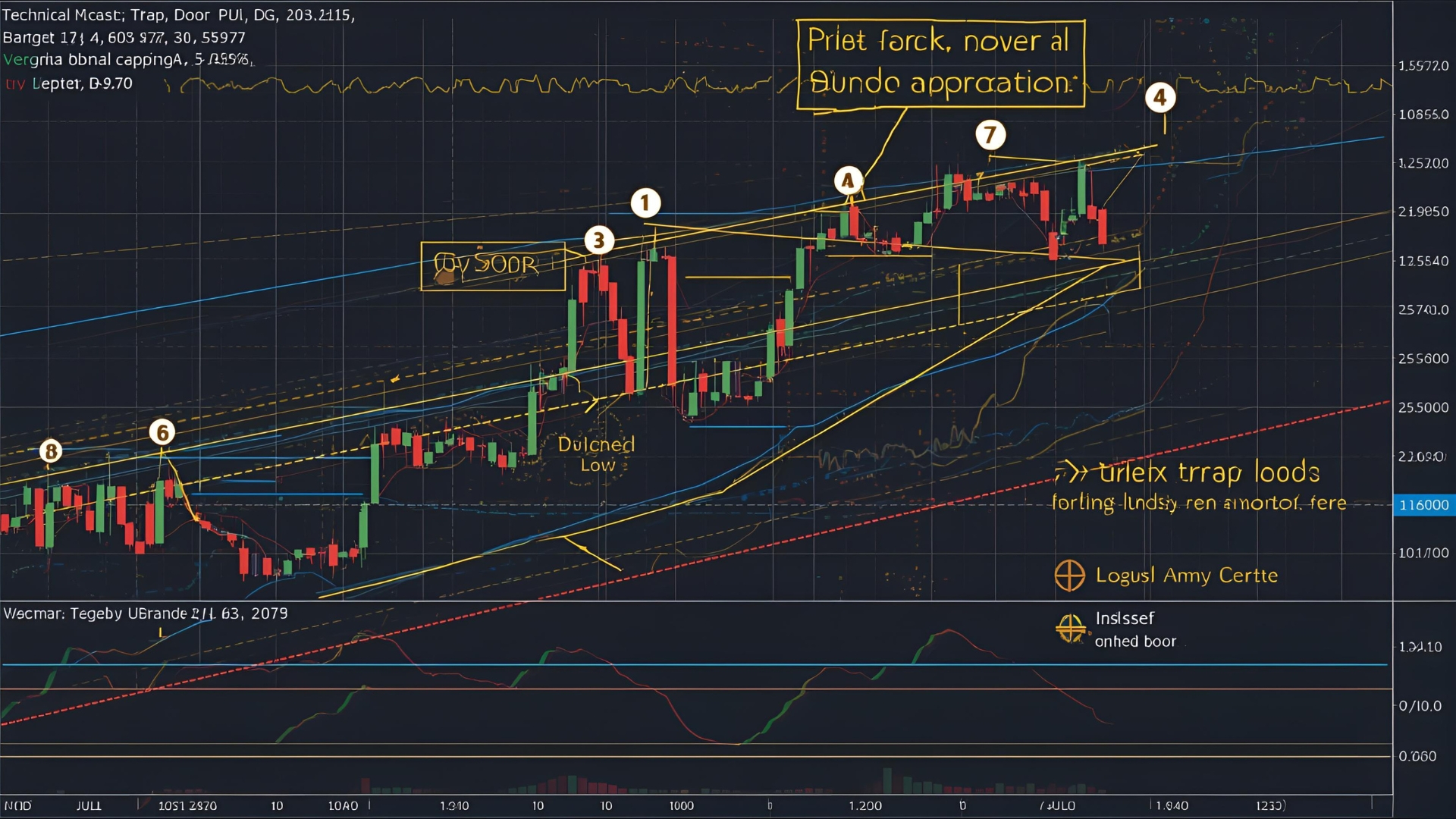Crypto Market Recap $100B Whipsaws, XRP’s Surge
Crypto Market Recap Massive $100B swings, BTC near highs, and XRP’s late surge steal the show. Here’s what moved the market and what..

The past stretch in digital assets has been a masterclass in volatility—and resilience. In this Crypto Market Recap, we unpack a wild sequence: an early-month breakout that put Bitcoin near record territory, an abrupt shock that erased over $100 billion in value within hours, and a late twist where XRP’s surge grabbed headlines. Macro jitters, leveraged liquidations, and a tug-of-war between risk aversion and risk appetite fueled eye-watering moves across Bitcoin (BTC), Ethereum (ETH), Solana (SOL), XRP, and select privacy and DeFi names. By digging into the catalysts, liquidity shifts, and on-chain narratives, we can make sense of the chaos and outline what matters for the next leg.
Bitcoin’s early-October strength pushed total crypto capitalisation back above $4 trillion, before a mid-month swoon knocked markets lower and then set the stage for selective altcoin outperformance. That combination—fast expansion of market cap, followed by a swift reset—produced the $100B swings that defined the period. Data points from major outlets confirm both the sharp run-up and the sudden pullback, highlighting how liquidity pockets and positioning can flip the tape in hours, not weeks.
BTC Near Highs, Liquidity Builds, and Sentiment Turns
Early in the month, Bitcoin charged to fresh highs, briefly topping the $125,000 mark as institutional demand and ETF flows underpinned a risk-on stance. That rally nudged Bitcoin’s market capitalisation toward $2.5 trillion and helped lift the total crypto market value back over $4.2 trillion. The narrative was straightforward: robust spot demand, growing acceptance of crypto as a macro hedge, and a backdrop of dollar weakness and policy uncertainty.
Liquidity followed price. Depth on centralised venues thickened, while open interest in derivatives climbed. This is often constructive during uptrends, but it also lays the kindling for magnified downside: heavy leverage means a modest shock can cascade into outsized liquidation flows. Research notes and mid-month updates flagged that context—a new high in total market cap followed by hesitancy, as traders watched macro headlines and reevaluated risk across majors and altcoins.
A Flash Reset that Erased Over $100B—and $19B in Liquidations
When the shock arrived, it was swift. Within hours, the crypto market shed over $100 billion in value as leveraged positions rapidly unwound. Subsequent forensic accounts tagged it as one of the largest single-session washouts in derivative history, with around $19 billion in open interest liquidated across CEXs and DEXs. Such cascades form when funding skews, thin liquidity pockets, and cross-venue liquidations overlap—turning a standard pullback into a “waterfall.”

Prices reflected the stress. Bitcoin slipped from its prior highs toward the $100K–$110K zone, Ethereum sold off in tandem, and many altcoins posted exaggerated drawdowns before stabilising. The pattern mirrored classic crypto “air pockets”: a quick liquidity vacuum, forced selling, then fast repricing as bids return. Market updates during the period logged day-over-day declines across BTC, ETH, XRP, and SOL, tying the slump to macro anxieties and risk-off signals in equities and FX.
The Rebound: From Capitulation to Cautious Dip-Buying
Once the liquidation engines quieted, dip-buyers stepped in. Several desks framed the event as a “shakeout,” noting that while structural leverage bled out, spot interest and institutional participation remained intact—especially around Bitcoin ETFs and treasuries experimenting with digital assets as a balance-sheet hedge. Analysts even argued that the washout improved the path to higher prices into year-end by resetting frothy positioning. In the days that followed, aggregate market cap stabilised and gradually ticked higher.
Interestingly, the rebound was not uniform. A handful of privacy coins and higher-beta Layer-1s led intraday bounces, while BTC and ETH consolidated. Zcash (ZEC), for instance, jumped ahead of peers during a lull in Bitcoin’s momentum, illustrating how rotation thrives after deleveraging events. For active traders, this was a critical tell: the market still rewarded idiosyncratic catalysts even as majors digested the shock.
Spotlight on XRP: A Late-Cycle Surge with New Catalysts
If the first half of the month belonged to Bitcoin, the late surge belonged to XRP. After stabilising above key supports, XRP’s momentum turned higher into the back half of the period, aided by a cluster of catalysts: renewed institutional interest, new prime brokerage integrations, and optimistic commentary from leadership that reinforced XRP’s role in cross-border settlement narratives. Some technical analysts flagged measured-move targets in the low-to-mid $3s if resistance levels broke cleanly. While targets are never guarantees, the setup is aligned with improving flows and supply dynamics.
Macro context mattered too. In risk-off shocks, XRP often behaves like a beta-altcoin, but it can flip quickly when liquidity returns and ETF chatter or bank-grade infrastructure news hits the tape. Separate coverage highlighted exchange outflow spikes—a double-edged signal that, when sustained, can imply reduced sell pressure on venues but can also precede pullbacks if driven by short-term rotation. Net, the tape action pointed to stronger hands accumulating after the sell-off, fueling the late pop.
Macro Drivers: Policy, Dollar, and Risk Assets
Behind the tape, macro forces amplified each turn of the wheel. The early rally coincided with risk-on vibes in U.S. equities and a bid for alternative assets, while the mid-month air pocket lined up with renewed trade tensions and headline risk. As equities wobbled, crypto’s correlation to broader risk rose, pulling prices lower. The subsequent stabilisation echoed prior cycles: once the macro shock is digested, crypto tends to revert to idiosyncratic drivers—on-chain activity, protocol upgrades, and ETF flows.
Market Structure: How $100B Swings Happen So Fast
Liquidity fragmentation explains the speed. Crypto trades 24/7 across dozens of centralised and decentralised venues. When significant moves hit, cross-margin positions and algorithmic market makers adjust simultaneously, thinning order books at the worst possible moment. If the basis and funding skew too far, liquidation engines start tripping. That sequence produces outsized moves relative to the initial catalyst. Post-event research chronicled how the October liquidation cascade set new records in notional terms, but also how the market processed it efficiently—clearing bad leverage and resetting funding.
The other ingredient is narrative velocity. Crypto narratives spread in minutes: ETF flows, policy rumours, corporate treasury buys, or address transfers all hit social feeds and spread across trading screens. That accelerates momentum ignition and explains why $100B swings are no longer rare in a multi-trillion-dollar asset class. Coverage from mainstream finance to specialist crypto outlets documented these whipsaws, from all-time highs to sudden drawdowns and back to grind-higher phases.
Sector Rotation: Who Won and Who Lagged
Bitcoin and Ethereum: Anchors with Event Risk
Bitcoin remains the anchor. It set the tone by probing all-time highs and then defending a higher range post-liquidation. Institutional behaviour—allocators using spot ETFs, corporates experimenting with BTC exposure—keeps a floor under deep drawdowns. Ethereum tracked BTC but showed slightly higher beta on down days, reflecting its more complex drivers (L2 activity, staking dynamics, and fee markets). Both assets consolidated as the dust settled, a typical post-shakeout behaviour.
Altcoins: Solana, Privacy, and Payments Narratives
Solana and select Layer-1 ecosystems saw violent but short-lived downside, then staged reflex rallies. Meanwhile, privacy coins like Zcash exhibited standout strength in specific sessions, hinting at a renewed bid for differentiated narratives. Payment-focused assets, led by XRP, outperformed late as settlement and institutional rails newsflow improved. Sector breadth remained uneven, rewarding specific catalysts over blanket beta exposure.
Technical Picture From Trap Doors to Higher Lows

On the charts, the liquidation break carved a trap-door wick, followed by a series of higher lows across majors. For BTC, that translated into constructive consolidation above prior resistance-turned-support; for ETH, reclaiming moving averages signalled a rebuild of momentum. XRP’s structure improved the most recently, with bulls eyeing a push through overhead supply in the low-$3s—an area that multiple analysts highlighted as pivotal for unlocking higher targets if volume confirmed. Remember, targets are scenario maps, not promises, but the confluence of structure, flows, and narrative gave XRP bulls fresh ammo.
On-Chain and Flows: What the Data Hinted
Exchange outflows and net stablecoin issuance patterns provided additional colour. Spikes in outflows can precede supply squeezes on venues, while rising stablecoin float often correlates with dry powder waiting to deploy. During the rebound, data signaled improving risk tolerance even as spot volumes normalized—consistent with a market transitioning from panic to accumulation. XRP’s outflow surge drew attention, though some analysts warned to contextualise it within broader liquidity conditions rather than treat it as a standalone buy signal.
Risk Factors : What Could Derail the Next Leg
Even as the Crypto Market Recap tilts constructive into the close, key risks remain:
-
Macro shocks: Renewed trade tensions or abrupt rate repricing could reignite risk-off. Market updates tied mid-month declines to exactly these forces.
-
Crowded positioning: If leverage builds too quickly, the next negative catalyst could trigger another liquidation cascade. October showed just how quickly $19B can be flushed out.
-
Liquidity fragmentation: Weekend gaps, thinner books on specific venues, and cross-venue arb delays keep volatility elevated near key levels.
Balancing these risks rests on a set of supporting pillars: persistent institutional adoption, healthy ETF flows, and improving infrastructure for custody, prime brokerage, and compliance.
What to Watch Next: Levels, Catalysts, and Narratives
For Bitcoin, watch the former highs near the mid-$120Ks as a magnet/resistance cluster and the post-shock demand zone around $105K–$110K. For Ethereum, monitor activity on rollups and fee burn trends. For XRP, the battleground sits in the low-to-mid $3s: clean breaks on volume could extend momentum, while failures invite rangebound churn. Macro-wise, keep an eye on policy headlines, ETF net flows, and the dollar. In narratives, payment rails, tokenised treasuries, and privacy remain in focus.
Bottom Line
The story of this Crypto Market Recap is twofold. First, crypto absorbed a violent shock—$100B+ swings and $19B in liquidations—yet found bids, reset leverage, and maintained its long-term structure. Second, XRP used the stabilisation window to mount a late surge, powered by institutional-grade headlines and improving technicals. If history is a guide, such washouts often clear the runway for more durable trends—provided macro doesn’t throw another curveball.
FAQs
Q: Why did the crypto market swing by over $100 billion so quickly?
Crypto liquidity is fragmented and highly leveraged. When prices gap lower, liquidation engines across venues trigger forced selling, turning a normal pullback into a cascade. This month’s drawdown erased over $100B in hours and included an estimated $19B in derivative liquidations, among the largest on record.
Q: Is XRP’s late surge sustainable or just a relief rally?
XRP’s bounce aligned with improving institutional narratives and constructive technicals. Sustainability depends on clearing overhead resistance in the low-$3s with rising volume and on broader risk appetite staying supportive. Leadership commentary and prime brokerage developments added fuel, but confirmation comes from price and liquidity follow-through.
Q: What role did ETFs and institutions play in the rebound?
Spot Bitcoin ETFs and growing treasury experimentation created a sturdier demand base than in past cycles. After the leverage was flushed out, that base helped stabilise the majors and restore risk tolerance, even if altcoin performance remained uneven.
Q: Which altcoins stood out during the rotation?
Select privacy and Layer-1 assets outperformed in specific sessions. Zcash (ZEC) notably led an altcoin bounce while BTC consolidated, showing that idiosyncratic catalysts still matter post-shakeout.
Q: What should traders watch in the weeks ahead?
Key levels on BTC near prior highs and support, XRP’s resistance in the low-$3s, ETF net flows, and macro headlines on trade and rates. On-chain, keep an eye on exchange outflows and stablecoin supply for clues about risk deployment.
Also Read: Cryptocurrency Earnings with PopAds: A Beginner&# Guide









